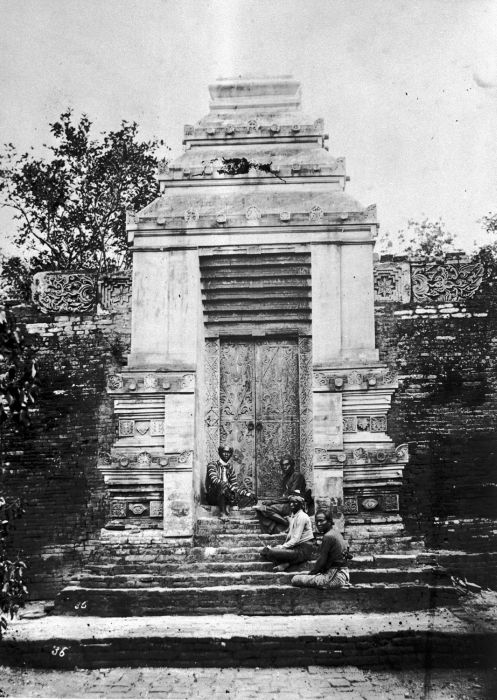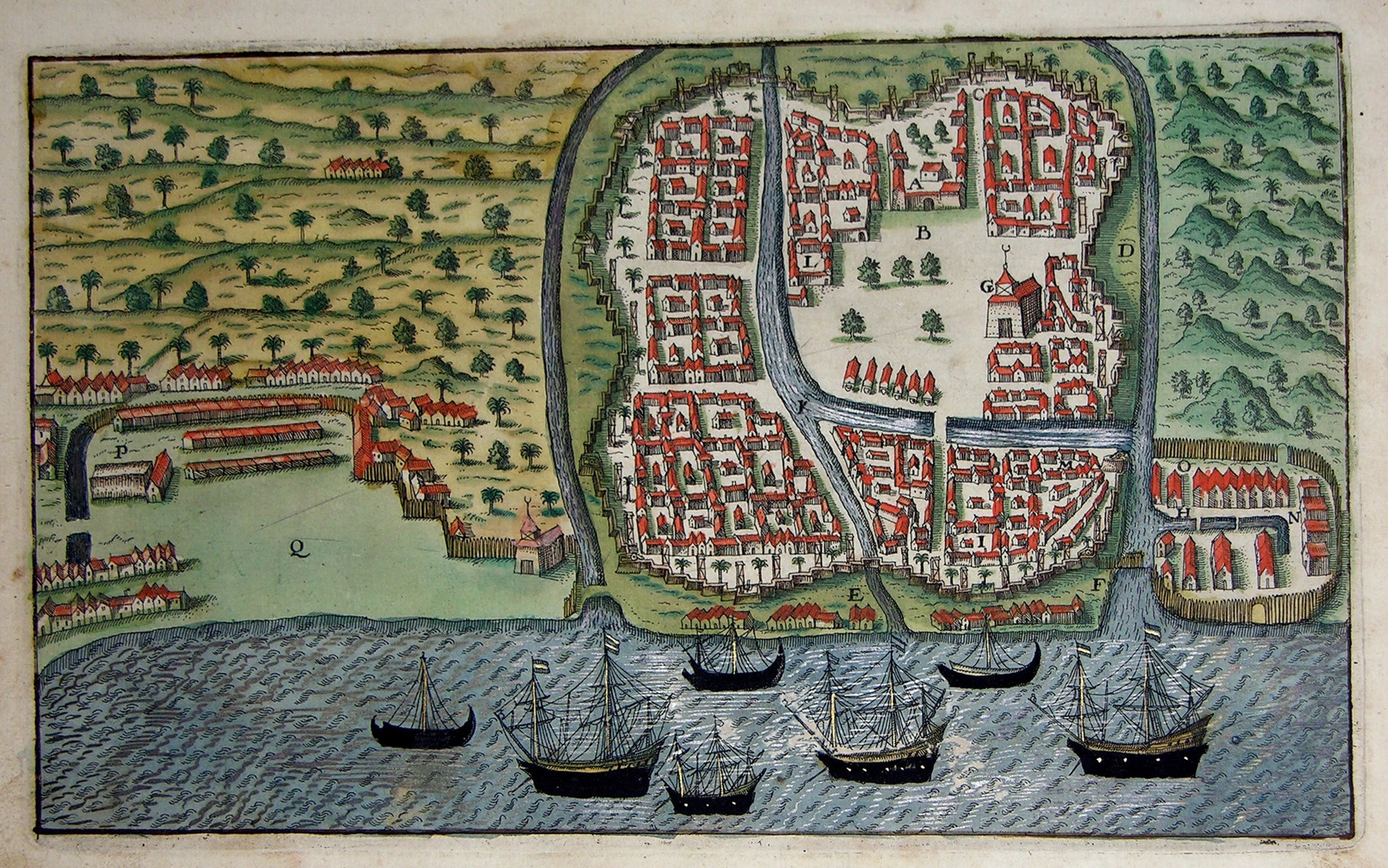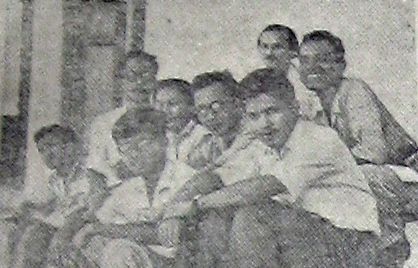|
Sukabumi Regency
Sukabumi Regency ( id, Kabupaten Sukabumi; Sundanese: ) is a regency ''(kabupaten)'' in southwestern Java, as part of West Java province of Indonesia. The regency seat is located in Palabuhan Ratu, a coastal district facing the Indian Ocean. The regency fully encircles the administratively separated city of Sukabumi. Covering an area of 4,145.70 km2, the regency is the largest regency in West Java and the second largest regency on Java after the Banyuwangi Regency in East Java. The regency had a population of 2,341,409 at the 2010 censusBiro Pusat Statistik, Jakarta, 2011. and 2,725,450 at the 2020 census;Badan Pusat Statistik, Jakarta, 2021. the official estimate as at mid 2021 was 2,761,476 with a large part of it living in the northeastern part of the regency that encircles Sukabumi City, south of Mount Gede. A plan to create a new regency, the North Sukabumi Regency is currently waiting for the approval of the central government. Sukabumi is strategically located south ... [...More Info...] [...Related Items...] OR: [Wikipedia] [Google] [Baidu] |
List Of Regencies And Cities Of Indonesia
Regencies (''kabupaten'') and cities (''kota'') are the second-level administrative subdivision in Indonesia, immediately below the provinces, and above the districts. Regencies are roughly equivalent to American counties, although most cities in the United States are below the counties. Following the implementation of decentralization beginning on 1 January 2001, regencies and city municipalities became the key administrative units responsible for providing most governmental services. Each of regencies and cities has their own local government and legislative body. The difference between a regency and a city lies in demography, size, and economy. Generally, a regency comprises a rural area larger than a city, but also often includes various towns. A city usually has non-agricultural economic activities. A regency is headed by a regent (''bupati''), while a city is headed by a mayor (''wali kota''). All regents, mayors, and members of legislatures are directly elected via ele ... [...More Info...] [...Related Items...] OR: [Wikipedia] [Google] [Baidu] |
Mataram Sultanate
The Sultanate of Mataram () was the last major independent Javanese kingdom on the island of Java before it was colonised by the Dutch. It was the dominant political force radiating from the interior of Central Java from the late 16th century until the beginning of the 18th century. Mataram reached its peak of power during the reign of Sultan Agung Anyokrokusumo (), and began to decline after his death in 1645. By the mid-18th century, Mataram lost both power and territory to the Dutch East India Company (Dutch: ''Vereenigde Oost-Indische Compagnie''; ''VOC''). It had become a vassal state of the company by 1749. Etymology The name ''Mataram'' itself was never the official name of any polity, as the Javanese often refer to their realm simply as ''Bhumi Jawa'' or ''Tanah Jawi'' ("Land of Java"). ''Mataram'' refers to the historical areas of plains south of Mount Merapi around present-day Muntilan, Sleman, Yogyakarta, and Prambanan. More precisely, it refers to the Kota Gede ... [...More Info...] [...Related Items...] OR: [Wikipedia] [Google] [Baidu] |
Aria Suriadiwangsa
In music, an aria (Italian: ; plural: ''arie'' , or ''arias'' in common usage, diminutive form arietta , plural ariette, or in English simply air) is a self-contained piece for one voice, with or without instrumental or orchestral accompaniment, normally part of a larger work. The typical context for arias is opera, but vocal arias also feature in oratorios and cantatas, or they can be stand-alone concert arias. The term was originally used to refer to any expressive melody, usually, but not always, performed by a singer. Etymology The Italian term ''aria'', which derives from the Greek ἀήρ and Latin ''aer'' (air), first appeared in relation to music in the 14th century when it simply signified a manner or style of singing or playing. By the end of the 16th century, the term 'aria' refers to an instrumental form (cf. Santino Garsi da Parma lute works, 'Aria del Gran Duca'). By the early 16th century it was in common use as meaning a simple setting of strophic poetry; melod ... [...More Info...] [...Related Items...] OR: [Wikipedia] [Google] [Baidu] |
Banten Sultanate
The Banten Sultanate (كسلطانن بنتن) was a Bantenese Islamic trading kingdom founded in the 16th century and centred in Banten, a port city on the northwest coast of Java; the contemporary English name of both was Bantam. It is said to have been founded by Sunan Gunungjati, who had previously founded Cirebon. Once a great trading centre in Southeast Asia, especially of pepper, the kingdom reached its apogee in the late 16th and mid-17th centuries. By the late 17th century its importance was overshadowed by Batavia, and finally annexed to Dutch East Indies in 1813. Its core territory now forms the Indonesian province of Banten. Today, in Old Banten, the Great Mosque of Banten is an important destination for tourists and for pilgrims from across Indonesia and from overseas. Formation Before 1526 CE, a settlement called Banten was situated about ten kilometres inland from the coast on the Cibanten River, in the area which is today occupied by the southern suburbs of ... [...More Info...] [...Related Items...] OR: [Wikipedia] [Google] [Baidu] |
Kingdom Of Sumedang Larang
Sumedang Larang ( Pegon: كراجأن سومدڠ لارڠ) is an Islamic Kingdom based in Sumedang, West Java. Its territory consisted of the Parahyangan region, before becoming a vassal state under the Mataram Sultanate. History This kingdom was founded in 721 AD by Prabu Tajimalela, descendant of the king Wretikandayun of Galuh Kingdom, in the former territory of Tembong Agung Kingdom. This kingdom was also known as the Kingdom of Himbar Buana before changing its name to Sumedang Larang. Sumedang Larang status as part of the Sunda Kingdom and Galuh between the 8th century to the 16th century AD, where the ruler is under the ruler of the two kingdoms. The capital city of Sumedang Larang at the time of its establishment was in Citebong Girang, which is currently included in the Cikeusi, Darmaraja, Sumedang. Islam began to develop in this region during the reign of Prince Santri (1530–1578 AD). During his reign, Sumedang Larang joined the Cirebon Sultanate. In 1578 AD, ... [...More Info...] [...Related Items...] OR: [Wikipedia] [Google] [Baidu] |
Pasir Datar Stone
Pasil ( fa, پسيل, also Romanized as Pasīl; also known as Pasīr) is a village in Sepiddasht Rural District, Papi District, Khorramabad County, Lorestan Province, Iran Iran, officially the Islamic Republic of Iran, and also called Persia, is a country located in Western Asia. It is bordered by Iraq and Turkey to the west, by Azerbaijan and Armenia to the northwest, by the Caspian Sea and Turkmeni .... At the 2006 census, its population was 469, in 92 families. References Towns and villages in Khorramabad County {{Khorramabad-geo-stub ... [...More Info...] [...Related Items...] OR: [Wikipedia] [Google] [Baidu] |
Nugroho Notosusanto
Brigadier General Raden Panji Nugroho Notosusanto (15 July 1930 – 3 June 1985) was an Indonesian short story writer turned military historian who served as professor of history at the University of Indonesia. Born to a noble family in Central Java, he exhibited a high degree of nationalism from a young age. During the Indonesian National Revolution from 1945 to 1949 he saw active service as a member of the Student Army, working reconnaissance. Despite wanting to remain in the military, under influence by his father he continued his education, eventually enrolling in the faculty of literature at the University of Indonesia. During the 1950s he wrote extensively and was active in numerous political and academic groups, finally graduating with a degree in history in 1958. After a failed attempt to study at the University of London, in the early 1960s Notosusanto – by then a lecturer – was contacted by General Abdul Haris Nasution and tasked with writing a history ... [...More Info...] [...Related Items...] OR: [Wikipedia] [Google] [Baidu] |
Sunda Kingdom
The Sunda Kingdom ( su, , Karajaan Sunda, ) was a Sundanese Hindu kingdom located in the western portion of the island of Java from 669 to around 1579, covering the area of present-day Banten, Jakarta, West Java, and the western part of Central Java. The capital of the Sunda Kingdom moved several times during its history, shifting between the Galuh (Kawali) area in the east and Pakuan Pajajaran in the west. The Sunda Kingdom reached its peak during the reign of King Sri Baduga Maharaja, whose reign from 1482 to 1521 is traditionally remembered as an age of peace and prosperity among Sundanese people. According to primary historical records such as the Bujangga Manik manuscript, the eastern border of the kingdom was the Pamali River (Ci Pamali, the present-day Brebes River) and the Serayu River (Ci Sarayu) in Central Java. Most accounts of the Sunda Kingdom come from primary historical records from the 16th century. The kingdom's inhabitants were primarily the eponymous ethni ... [...More Info...] [...Related Items...] OR: [Wikipedia] [Google] [Baidu] |
Kawi Script
The Kawi or or Old Javanese script is a Brahmic script found primarily in Java and used across much of Maritime Southeast Asia between the 8th century and the 16th century.Aditya Bayu Perdana and Ilham Nurwansah 2020Proposal to encode Kawi/ref> The script is an abugida meaning that characters are read with an inherent vowel. Diacritics are used, either to suppress the vowel and represent a pure consonant, or to represent other vowels.De Casparis, J. G. ''Indonesian Palaeography: A History of Writing in Indonesia from the beginnings to c. AD 1500'', Leiden/Koln, 1975, pp. 35-42 with footnotes History The Kawi script is related to the Nagari or old-Devanagari script in India. Also called the Prae-Nagari in Dutch publications after the classic work of F.D.K. Bosch on early Indonesian scripts, the early-Nagari form of script was primarily used in the Kawi script form to write southeast Asian Sanskrit and Old Javanese language in central and eastern Java. Kawi is the ancestor of tr ... [...More Info...] [...Related Items...] OR: [Wikipedia] [Google] [Baidu] |
Sanghyang Tapak Inscription
The Sanghyang Tapak inscription (also known as Jayabupati inscription or Cicatih inscription) is an ancient inscription dated from 952 saka (1030 CE), consist of 40 lines requiring 4 piece of stone to write on. The inscription mentioned about the establishment of a protected sacred area called Sanghyang Tapak by the King of Sunda named Jayabhupati. These 4 stones are found in the Cicatih River bank in Cibadak, Sukabumi, West Java. Three were found near Kampung Bantar Muncang, while one was found near Kampung Pangcalikan. The inscriptions are written in the ancient Javanese Kawi script. Now the four inscriptions are stored at National Museum of Indonesia, with code D 73 (Cicatih), D 96, D 97 and D 98. Contents The contents of the first three inscriptions (according to Pleyte): D 73: //O// ''Swasti shakawarsatita 952 karttikamasa tithi dwadashi shuklapa-ksa. ha. ka. ra. wara tambir. iri- ka diwasha nira prahajyan sunda ma-haraja shri jayabhupati jayamana- hen wisnumurtti sa ... [...More Info...] [...Related Items...] OR: [Wikipedia] [Google] [Baidu] |







